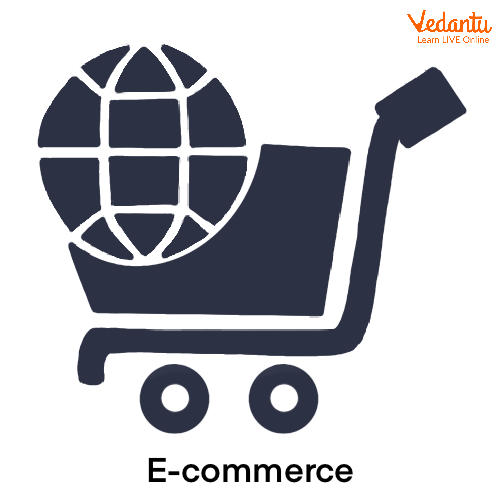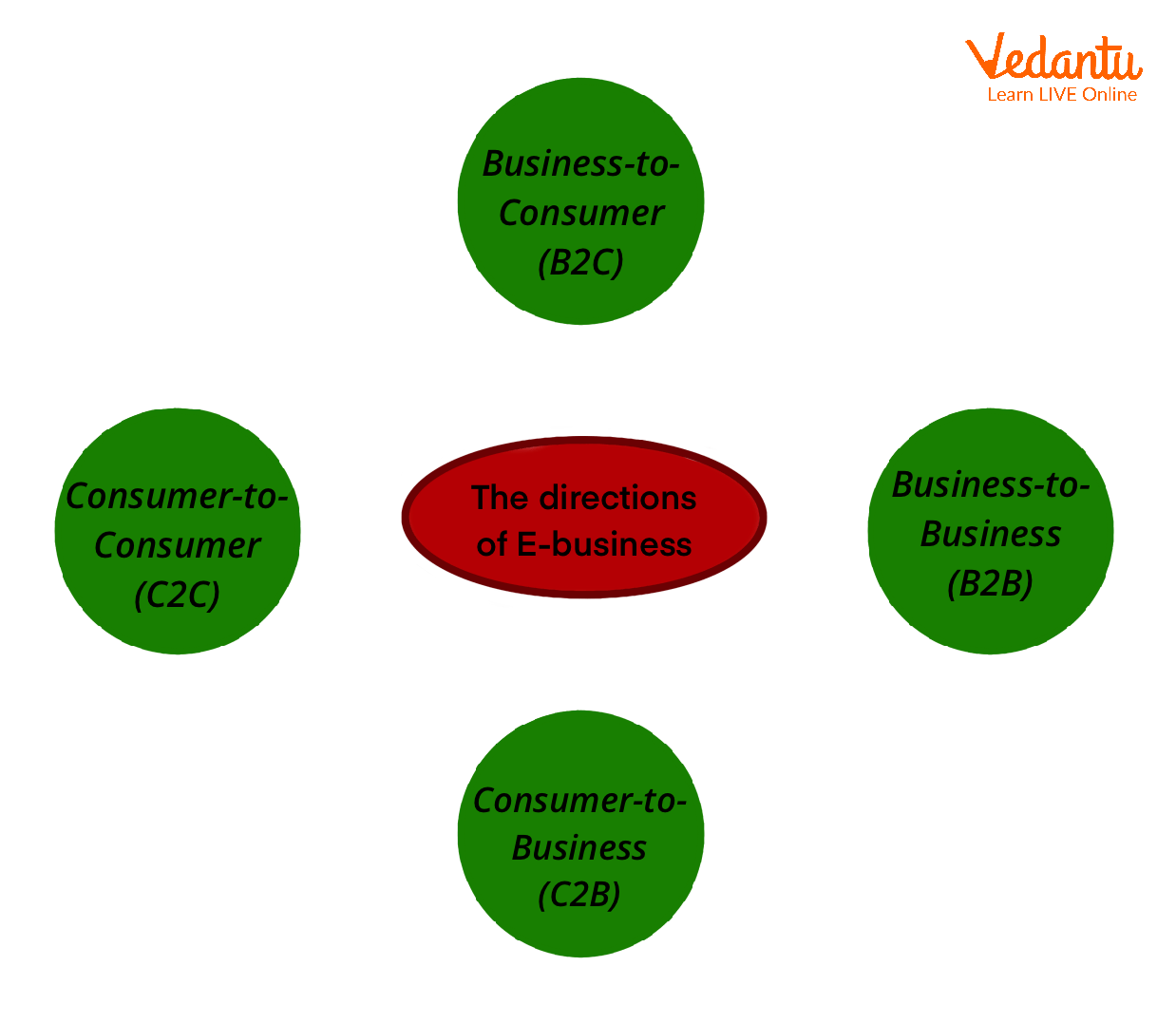





E-commerce
Scope of E-Business
Explanation of the scope of e-Business can be listed as hereunder:
There are a large number of people involved in e-commerce, such as the transporter, seller, buyer, intermediary, delivery agency and many more such organisations, which provide a huge base of employment to the various sections of society.
It promotes digitalisation not only in terms of the selling of goods but due to the availability of various modes of payment such as phone pe, Paytm, wallet and many such agencies.
The database is integrated from a centralised system. Hence there is a quick update of the data, which is how faster transactions are processed and reach the customers on time.

Online Shopping
Difference between the E-business and Traditional Business
Directions for the E-Business
There are 4 kinds of direction of E-business
B2B Commerce (Business-to-Business)
In this case, the business provides services or provides manufactured goods to other businesses in order to generate revenue
B2C Commerce (Business-to-Consumer)
B2C commerce directly serves the final consumers by delivering goods directly to the final consumers and eliminating the intermediaries.
B2G Commerce (Business-to-Government)
Here the business enterprise provides goods either to the central government or state government or some local authorities. They may also be provided to the government corporations in the case of B2G Commerce.
C2C Commerce (Consumer-to-Consumer)
Sometimes, one consumer sells goods to another consumer in order to generate income in the form of brokerage or commission. Such a type of direction is known as C2C commerce.

Directions of E-Business
Case Study
Vishal has recently started his business. His friend Nishad insists on him selling goods via an e-commerce platform, but Vishal refuses to do so. So in favour of Nishad, enlist some benefits of e-commerce.
Ans: The benefits available to Vishal are as under
It attracts a large customer base from anywhere in the world.
It brings uniformity to scaled business
The entry is very easier into the e-commerce business
Elimination of time delays in respect of payments and in delivery of goods
Conclusion
E-commerce has eased the life of humans, it now becomes just a click and then done. There is a need to shift every enterprise on e-commerce to beat the competition. Anytime and anywhere is the most important keynote for e-commerce.






FAQs on E-Commerce: Transforming Business in a New Era
1. List the illustration of the e-commerce transactions
Various steps in e-commerce transactions are as follows.
Step 1: Either download the app or go to the website of the e-commerce platform of your choice and login it
Step 2: After login, choose the type of product, then the product which the user wants to buy.
Step 3: Then choose the online payment and confirm all the details of the user
Step 4: After proceeding for payment choose the payment gateway and enter the relevant payment details and then make the payment
Step 5: Save the acknowledgment details of goods purchased or either trace it from the e-commerce website of e-commerce.
2. List the benefits of e-commerce to consumers.
The benefits of e-commerce to the consumers are as follows:
Anytime and anywhere, the consumer can buy goods of his own choice.
Various deals and other incentives are available to the consumer, which reduces the cost of purchased goods.
On e-commerce websites, reviews and ratings are also available in order to choose whether the goods are fit for the consumption of a consumer or not.
Due to the wide variety of options available in the market, it is easier for the consumer to crack the best deals available by comparison from various e-commerce websites.
3. List the components of the e-commerce vendors and laws applicable to e-commerce.
Components of e-commerce vendors are as follows:
Suppliers and supply chain management
Warehouse operations
Shipping and returns
E-commerce catalogue and product display
Marketing and loyalty programs
Showroom and offline purchase
Different ordering methods
Guarantee
Privacy policy
Security
Laws applicable on e-commerce business are as follows
Indian contract act 1872
Labour Laws
Indian copyright act 1957
The patents act 1970
Goods and services tax
The income tax act 1961
Information technology act 2000
Consumer protection act 2019
Companies Act 2013





















